
5 minute read
In the pink
by Dales Life
The showy, sweetly scented flowers of dianthus are one of summer’s garden highlights, says Adam Appleyard
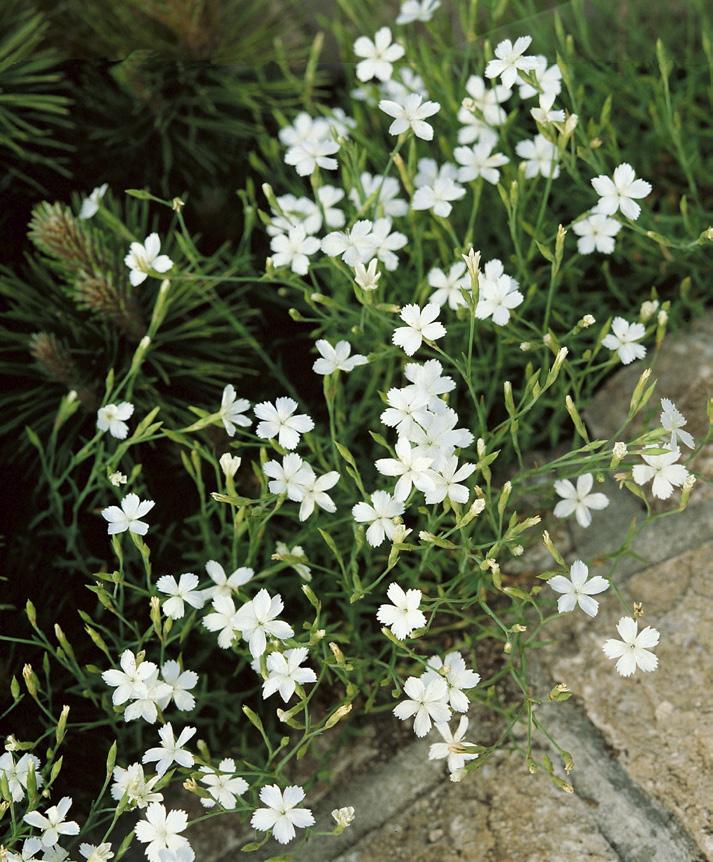
Opening photo, Dianthus 'Tequila Sunrise' ABOVE Dianthus deltoides 'Alba'
Advertisement
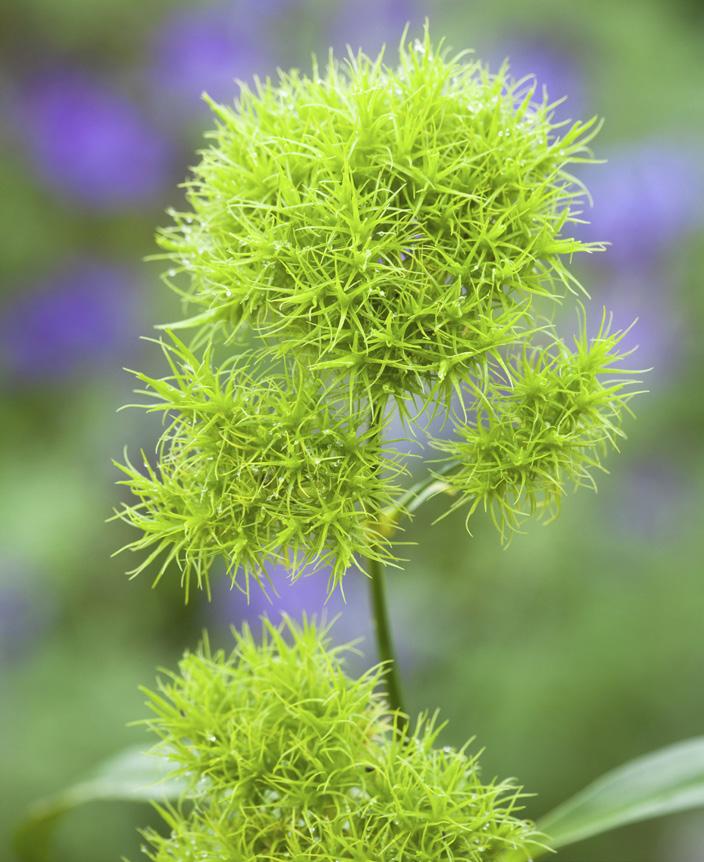
Dianthus Barbatus 'Green Trick'
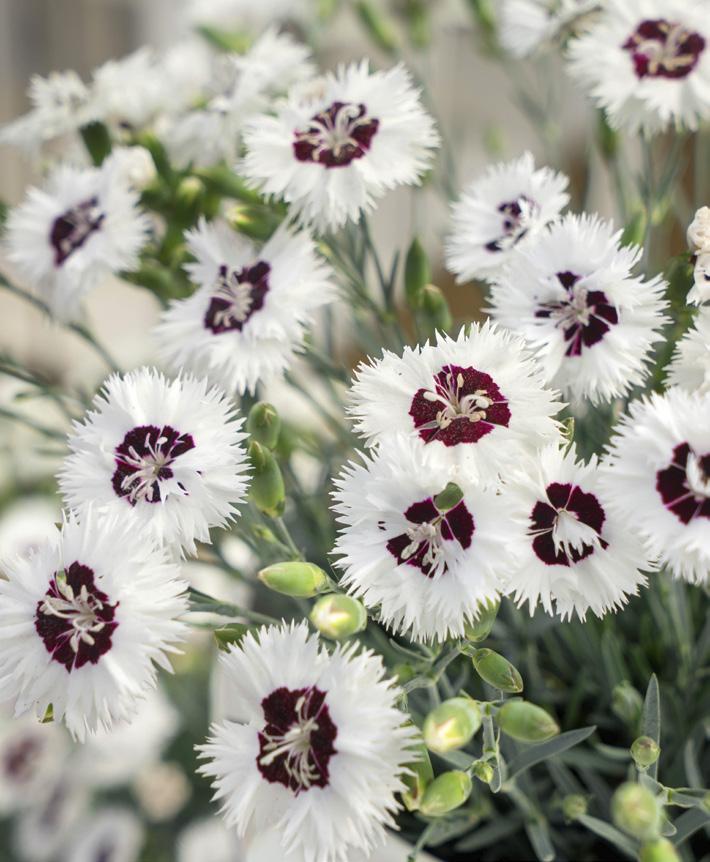
Dianthus plumarius 'Stargazer'

Small bouquet of Dianthus plumarius in a paper bag.
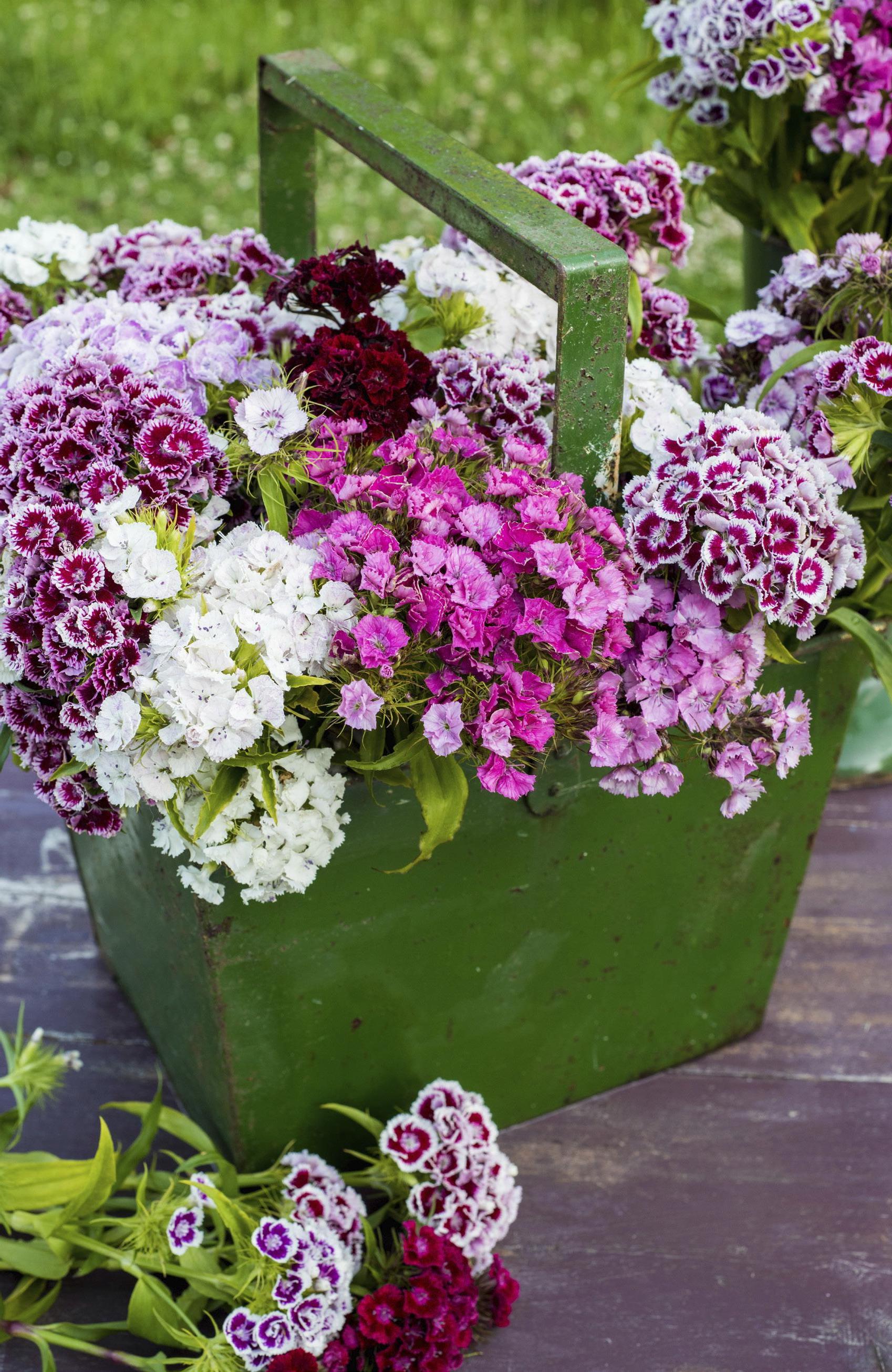
Cut Dianthus barbatus – Sweet Williams in a basket
Plants of the genus Dianthus are commonly known as ‘pinks’, and gardeners tend to assume that this is because many dianthus are wholly or partly pink. Surprisingly, though, the opposite is true: the colour pink was named after the flower!
The word ‘pink’ originated in the 1300s, and meant to decorate with a zig-zag edge – a job for which tailors and sewing enthusiasts use pinking shears to this day. Because the petals of dianthus flowers have conspicuously toothed, frilly or fringed edges, they quickly became known as ‘pinks’.
‘Pink’ didn’t in fact become a colour name until the 17th century, when the name of the flower was borrowed to refer to the gorgeous pastel red of the Dianthus species that were highly prized plants in European gardens at the time.
Today, three hundred years later, dianthus are still hugely popular, and the range of varieties available to gardeners has expanded to include a dizzying range of different colour combinations and shapes.
HEAVEN SCENT:
Dianthus plumarius Perhaps the most familiar pink is Dianthus plumarius, also known as the common pink, a hardy and easy-to-grow mat-forming evergreen with attractive narrow, grey-green leaves.
Throughout summer Dianthus plumarius sends up thin, wiry stalks bearing small groups of flowerheads. Depending on the cultivar these can be deep red, pink, white or a combination of several shades. They are powerfully scented with a sweet, clove-like perfume, and make excellent, long-lasting cut flowers.
As with many Dianthus species, there are enormous numbers of different cultivars – in fact the RHS’s most recent list of Dianthus cultivars runs to over 1,000 pages! One classic, first bred in 1868 and still going strong, is ‘Mrs Sinkins’. Its flowers, with their double set of pure white petals, are like little fluffy pompoms, and pop up from early June until the end of July.
Another real cracker, introduced almost exactly a century later, is 'Gran's Favourite’, a real eyecatcher with its snow-white petals edged with dark purple-pink.
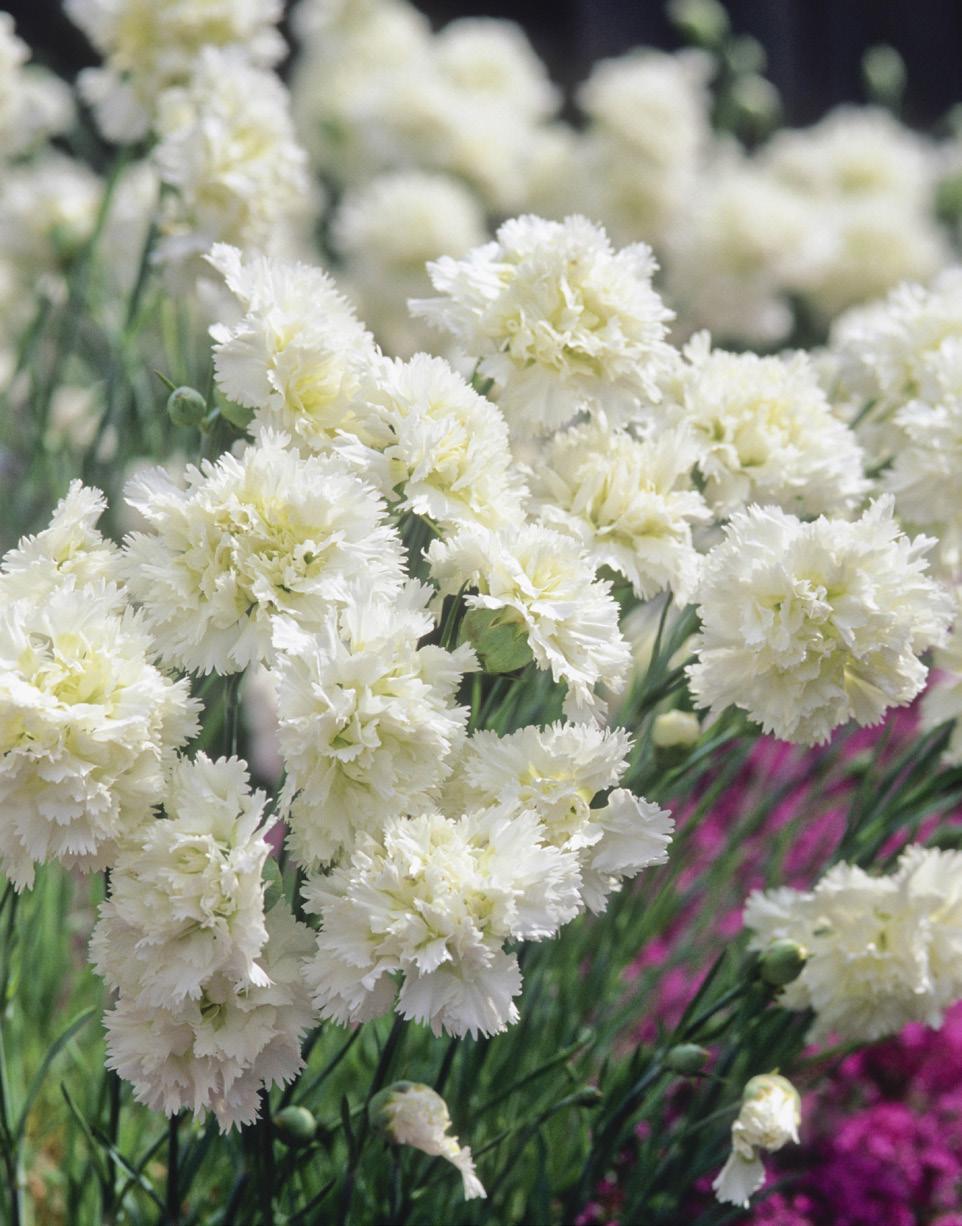
Dianthus 'Mrs Sinkins'
CRACKING CARNATIONS:
Dianthus caryophyllus and the Allwood hybrids Dianthus caryophyllus, the border carnation, flowers a little later than Dianthus plumarius, potentially extending your dianthus season through until the end of August or the beginning of September. Unlike the evergreen Dianthus plumarius it’s a herbaceous perennial, that’s to say it will die back and disappear in autumn before reappearing next spring.
In the wild, Dianthus caryophyllus flowers are a bright purplish pink, and many cultivars deploy this vivid colouration to stunning effect. A good example is ‘Pink Kisses’, whose flowers have dark, smouldering centres that gently graduate into pale pink.
Another attractive group of carnations, often referred to as ‘the Allwood hybrids’, was created by English nurseryman Montagu Allwood in the 1920s by cross-breeding the two species we have just discussed, Dianthus plumarius and Dianthus caryophyllus.
The resulting plants, which combine the best qualities of both parents, are semi-evergreen and double-flowered, and they will bloom all summer long. Attractive cultivars include ‘Tequila Sunrise and ‘Doris’, two subtly patterned plants that sit well in containers or towards the front of a border.
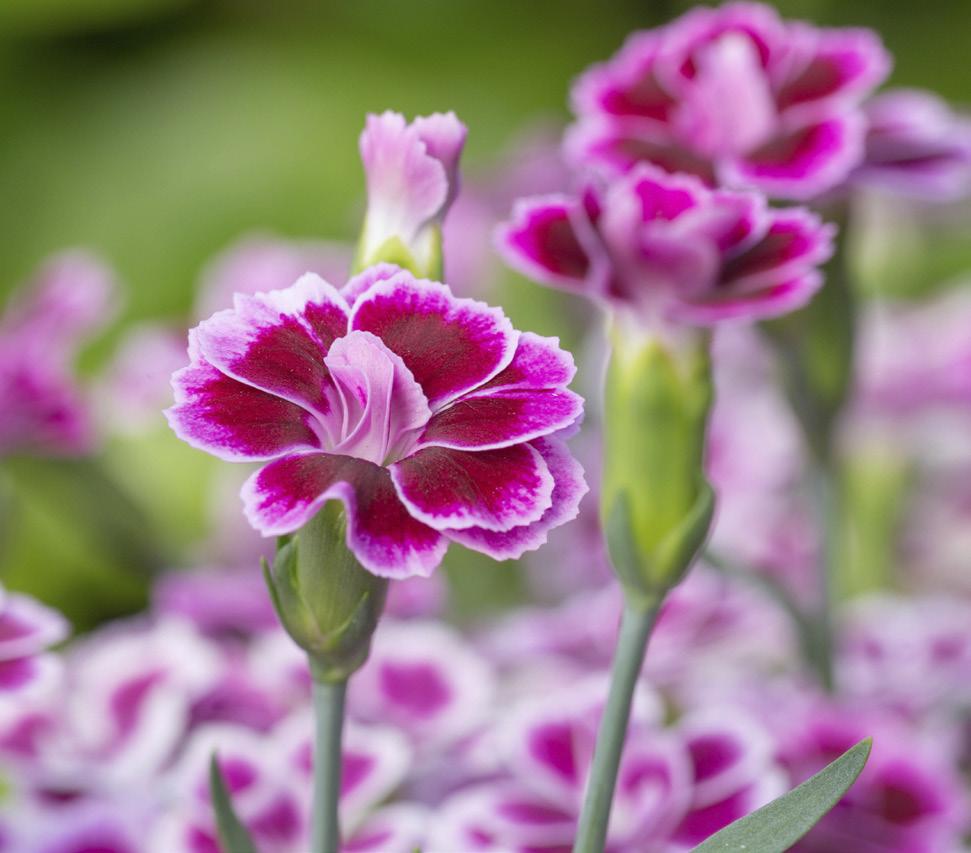
Dianthus caryophyllus 'Pink Kisses'
A LITTLE GEM AND A BRILLIANT BIENNIAL:
Dianthus deltoides and Dianthus barbatus For rockeries, gravel borders, edges of paths or growing between paving stones, Dianthus deltoides, also known as maiden pink, is a good choice. It’s smaller than the dianthus varieties discussed so far, but what its flowers lack in size they make up for in sheer number. They come in various shades of crimson, pink and white, and butterflies and bees love them.
When it comes to floral profusion, though, it’s hard to beat Sweet William, Dianthus barbatus. Sweet William is a stout, bushy plant that stands around 50cm tall. From June to August it produces dense, showy clusters of flowers in a wide range of colours, from dark crimsons through reds and pinks to white.
It’s definitely one of the most dramatic species of Dianthus, and its only downside is that it is a biennial, flowering in its second year and then dying. Fortunately, like many dianthus, it’s easy to grow from seed or propagate from cuttings or divisions.
Two of the oddest and most striking cultivars of Sweet William are ‘Green Trick’ and the closely related ‘Green Ball’. With blooms that look like fuzzy lime-green globes, they are a perfect choice for gardeners in search of something a little out-of-theordinary. Florists and flower-arrangers love them too – the stems will last for up to a month in a vase!
Dianthus Top Tips
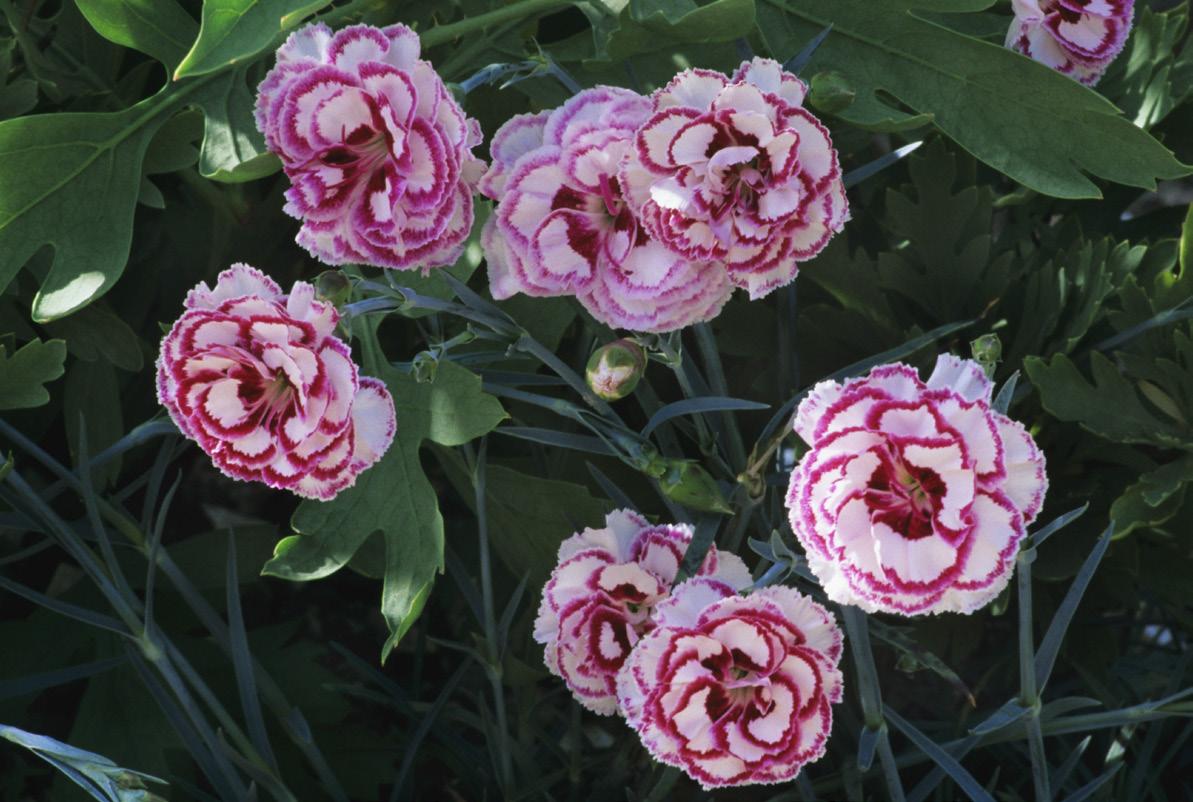
Dianthus 'Gran's Favourite' flowering in June
Pretty much all dianthus will be happiest in a relatively sheltered position in full sun. Most species like neutral to slightly alkaline soil, although Dianthus barbatus is less enthusiastic about soils with a high pH, making it a better choice for those who garden on slightly acid soils.
Dianthus like rich, nutritious soil, so mulch your soil with compost or well-rotted manure in spring, or apply a liquid feed every 6–8 weeks during the growing season. Water fairly sparingly. If the leaves on your dianthus turn yellow it may well be through over-watering.
Regular dead-heading will ensure that your dianthus produce flowers for the maximum possible period.
Divide clumps every 3–4 years to keep your plants vigorous. In the case of Dianthus barbatus, propagate by dividing clumps or taking cuttings from side shoots during the plant’s second spring.
Most species of dianthus are easy to grow from seed, either indoors or under cover, although many, including Dianthus barbatus, won’t flower until their second year.






